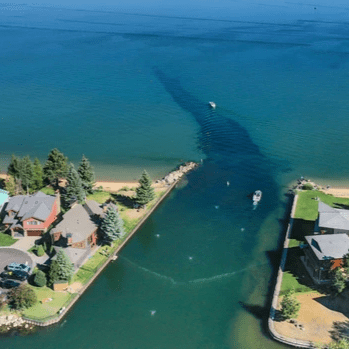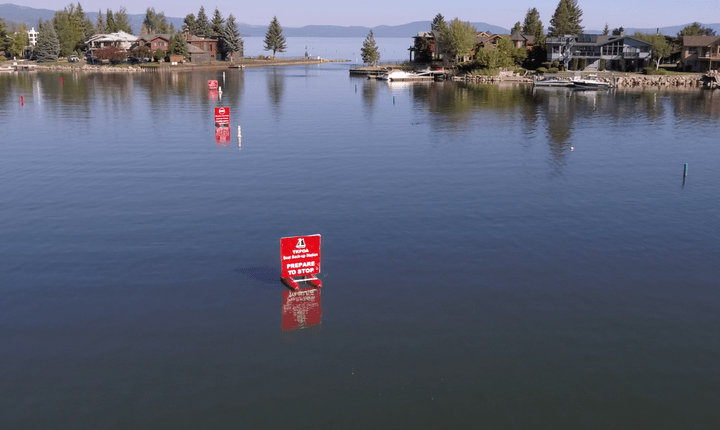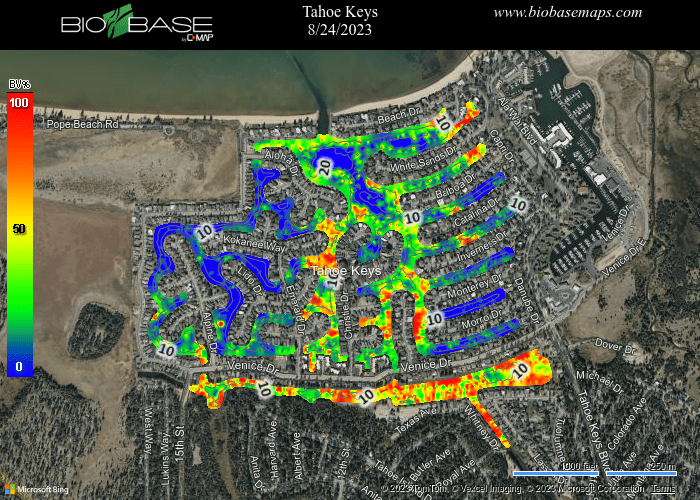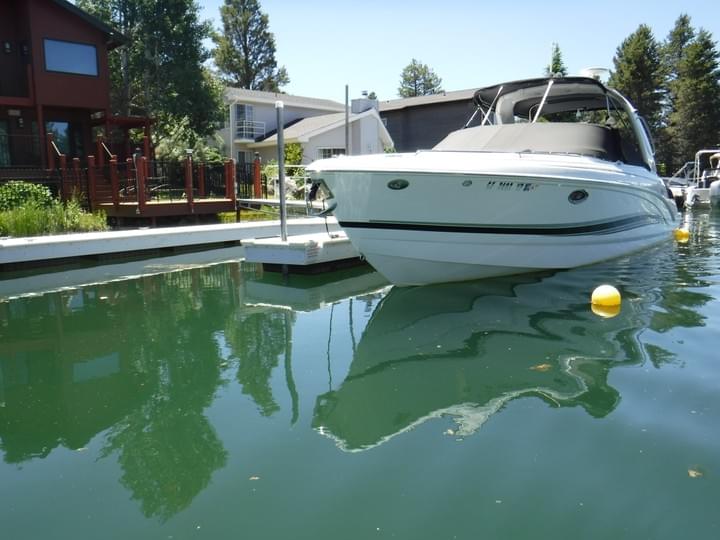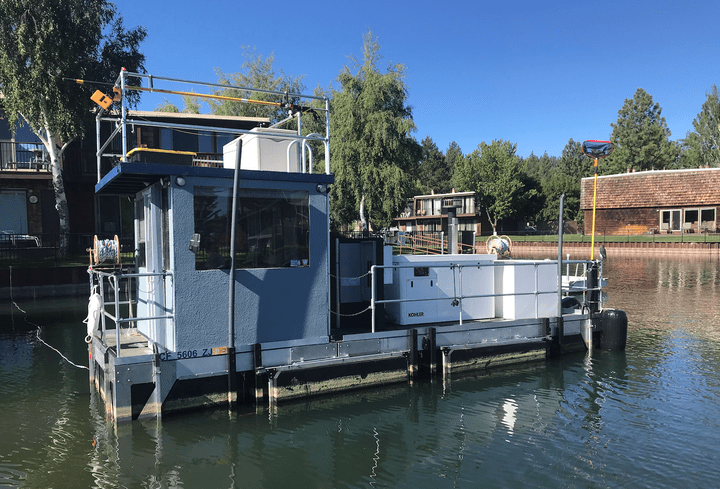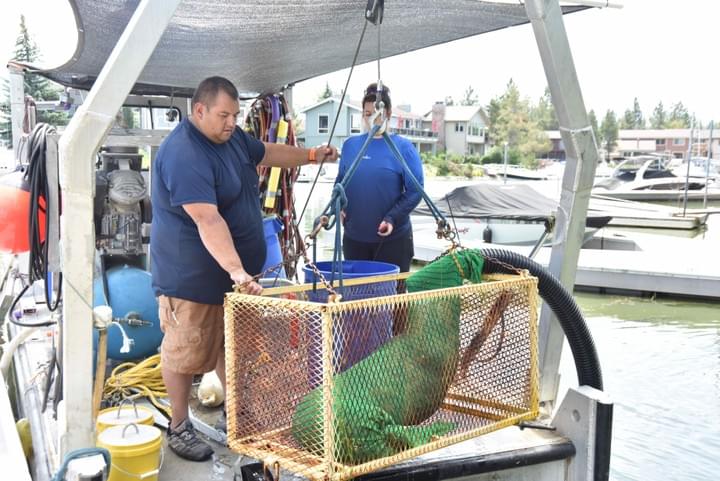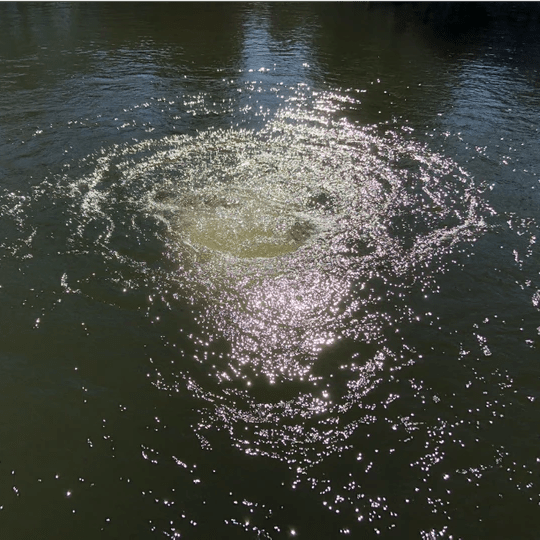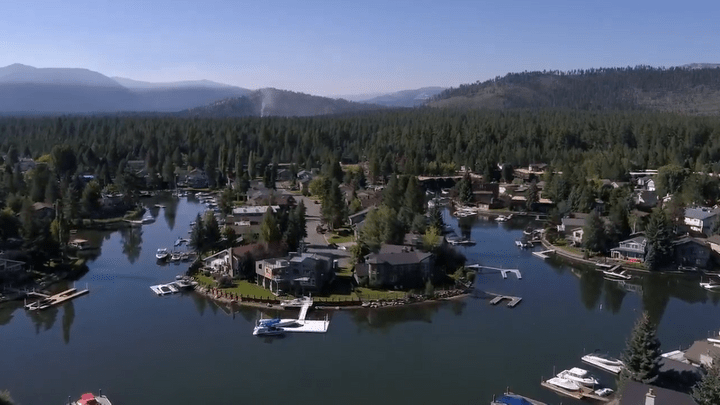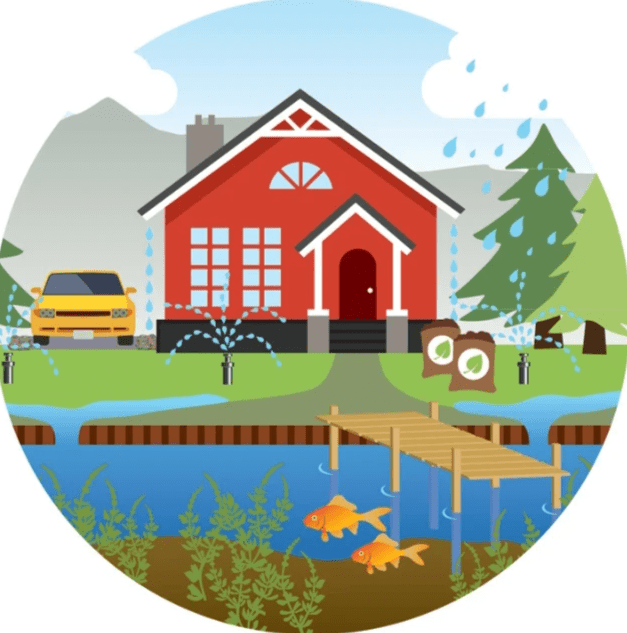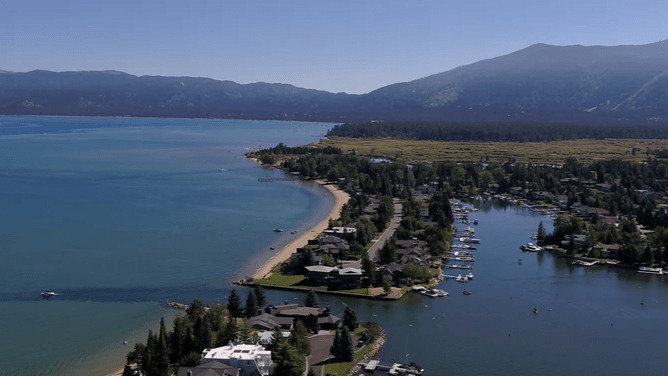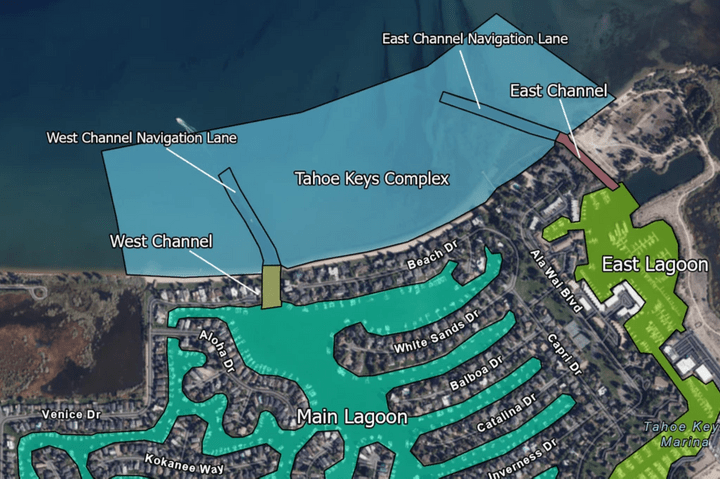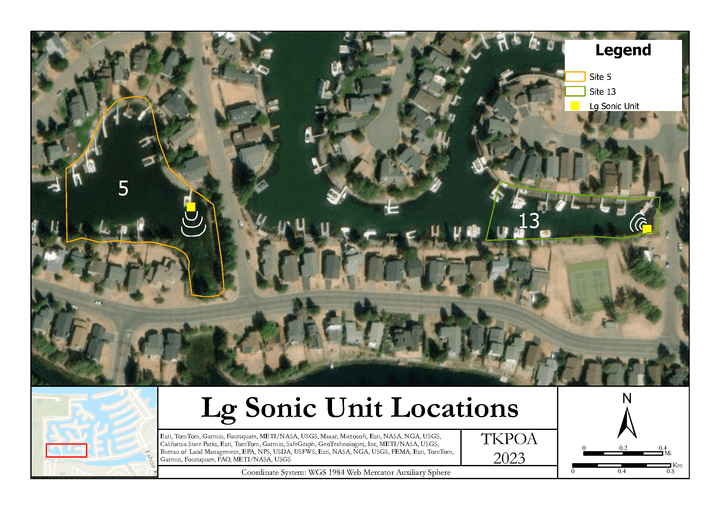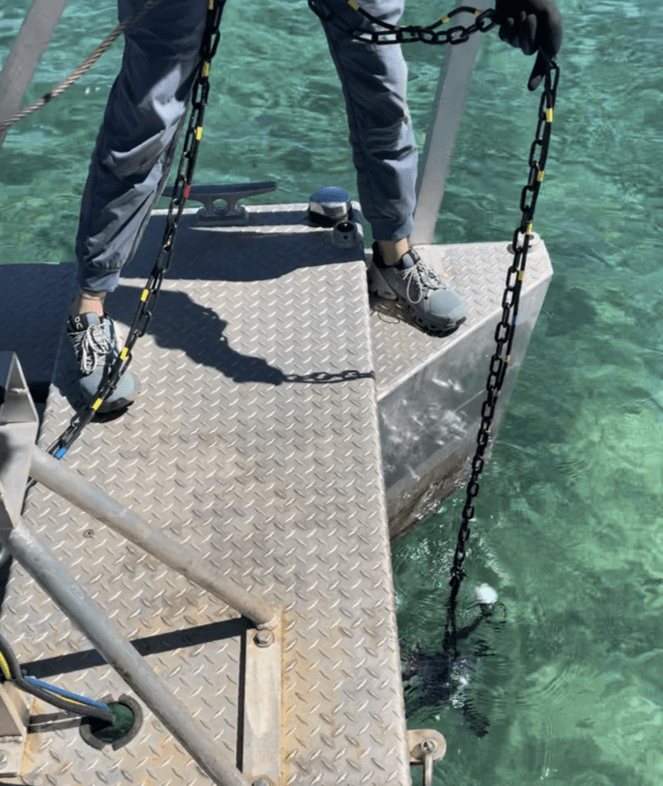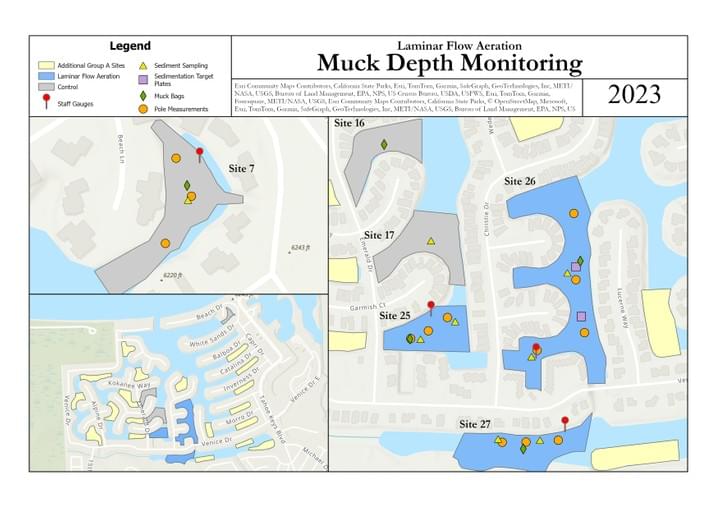
- Home
- Large Scale Weed Removal
- Harvesting Operations
- Lagoon Water Quality
- Waterways Program
- Take Action
- Meet the Team
- Permits & Reports

Waterways Program
Aquatic Invasive Plants (AIP) Mitigation Projects
- Video by Sierra Overhead Analytics
Why is Controlling AIP Important?
Aquatic invasive plants have taken root in shallow waters around Lake Tahoe, threatening the lake’s prized clarity, water quality, ecology, recreation and economy.
The continued spread of these aquatic invasive plants could rapidly transform from a nuisance to a very real threat to the environment, water quality, recreation and the economy of Lake Tahoe. These plants can harbor other non-native species and create ideal habitat for mosquitoes and non-native fish.
Species in the Tahoe Keys Lagoons
Native and Non-Native Species
Click Here for a List of Species in Lake Tahoe.
Elodia
Native
Richardson's Pondweed
Native
Curlyleaf Pondweed
Non-Native
Eurasian Watermillfoil
Non-Native
Coontail
Native Nuisance
Current Projects
Check out all of the ongoing projects below!

Tahoe Keys Bubble Curtain
The Tahoe Keys Bubble curtain was installed in 2018 to create a barrier that prevents AIS fragments from entering Lake Tahoe. During 2020 the TKPOA AIS program installed a new 7.4 horsepower compressor that provides more air flow to the bubble curtain, creating a better barrier. This project was funded in part by the League to Save Lake Tahoe.
For more information on the Bubble Curtain click here

Back-Up Station
Instructs boats to back up to dislodge vegetation fragments from their props and rudders. The TKPOA implemented the Boat Back-Up Station in 2016 and has continued to improve on the design. The system now utilizes the combined strategies of the Boat Back-Up station, bubble curtain, bottom barriers and seabins. The Boat Back-Up station notifies boaters to back up, ensuring that weeds caught on their props and rudders are dislodged before they enter the lake.

Hydroacoustic Scans
The AIS staff map plant density in the Tahoe Keys Lagoons. It is done using an HDS 7 Lowrance system with a HDI 83/200 Transducer mounted on the AIS boat and Biobase software that determines plant density based on the structure scan produced by the Lowrance system. These scans help the Waterways Department determine which areas have the worst infestation.

Bottom Barriers
Synthetic mats are installed to block out sunlight and smother aquatic invasive weeds on the floor of the lagoons. These barriers are installed at locations requested by homeowners who volunteer for this program. The Association is allowed a total of five acres of bottom barrier coverage.
Check out the 'Take Action' page to learn how to sign up for a Bottom Barrier!

UV Light
This method is currently being tested at the Lakeside Marina. Depending on the outcome of the UV light test, this method could also be one of TKPOA’s many tools in their integrative approach to managing the invasive plants.

Diver Assisted Suction Harvesting
Divers pull plants by hand and put them into a suction hose to be collected from staff on the surface. Diver assisted hand pulling was conducted throughout the Tahoe Keys Complex outside of the West Channel in 2020 and is planned for the East Channel in 2021.
For more information on diver assisted hand pulling click here

Laminar Flow Aeration (LFA)
The TKPOA currently has 2 LFA sites, one adjacent to Christie Dr. North of Venice Dr and another in the West Channel entrance. LFA involves bubbling air through several small diffusers on the bottom of the lagoons. The air bubbles create circulation, increasing the amount of oxygen at the bottom of the lagoons, which promotes microbial activity in the sediment and “muck”. This change is intended to make the nutrients less available for the weeds and algae, which should reduce the rate and amount of weed growth in the area of the LFA test. Status: TKPOA has received financial support for this project from The League to Save Lake Tahoe.
This project was funded in part by the League to Save Lake Tahoe.
For more information on LFA click here

Circulation System
Circulation system moves water to disrupt algae proliferation. The Tahoe Keys was constructed with a water circulation system to keep water in the lagoons as clean as possible. This system used coagulation to reduce Total Dissolved Solids (TDS) and decrease turbidity helping keep the lagoons relatively clear.

Best Management Practices
The TKPOA is developing Best Management Practices (BMP) to prevent runoff from houses and yards that may contain nutrients that would fuel vegetation growth. Stormwater and erosion control BMPs are retrofit measures required on all private properties in the Lake Tahoe Region to control erosion and infiltrate stormwater before it leaves the property. BMPs are proven to prevent sediment, nutrients, and other pollutants from entering waterways. BMPs include pollutant source control measures which reduce the amount of pollutants present and hydrologic source control measures to direct stormwater and snowmelt runoff so that pollutants are filtered out and prevented from entering surface water.

Harvesting Operations
Harvesting is the primary control method available to the Tahoe Keys today. Throughout the summer months the TKPOA operates harvesters that remove vegetation from designated sections. During the months of July and August, harvesters focus on navigation lanes so boaters can travel through the lagoons. During the last few weeks of the harvesting season harvesters focus on removing as much vegetation as possible by harvesting the entire section between homeowner docks. This helps to reduce available nutrients and may possibly help reduce vegetation growth the following season.

Lagoon Friendly Landscaping
TKPOA encourages phosphorus free fertilizers to decrease available nutrients for aquatic macrophytes.
The Lake and Lagoon Friendly Landscaping educational campaign was initiated in 2017 to annually inform property owners on best practices to reduce runoff and pollutants through better landscaping techniques.
Most landscaped areas in the Tahoe Keys Facility are under the control of individual homeowners who may maintain their properties or may contract private landscaping companies for maintenance. TRPA acknowledges and tracks BMP installation by inspecting and issuing a BMP Certification or Source Control Certificate (SCC) letter to the property owner. A BMP Certificate certifies that the BMPs are properly installed and functioning on a property.
For more, read: TKPOA Landscape Conservation Guidebook

Tahoe Keys Complex Restoration
The Tahoe Resource Conservation District (TRCD) has funded diver assisted hand pulling within the Tahoe Keys Complex along with the East and West Channels. This project was started in 2020 and will continue into 2021.
For more information on diver assisted hand pulling click here

LG Sonic Industrial Wet Ultrasonic Unit
In 2023, the team installed two LG Sonic Industrial Wet ultrasonic devices to evaluate a new method of controlling Harmful Algae Blooms (HABs) in dead-end waterways. These devices emit low-power ultrasonic waves in the top water layer, which interferes with the algae’s ability to reach the surface to access sunlight and nutrients, preventing photosynthesis. This causes the algae to sink to the bottom where they decompose naturally without releasing harmful toxins. The ultrasonic waves have no negative effects on aquatic organisms, animals, or humans. CMT Sites 5 and 13 were determined optimal test sites due to their dead-end locations as well as previous years’ HABs occurrences.

Photosynthetically Active Radiation (PAR) Monitoring
Light is a major driver of plant growth. Data collected from PAR monitoing helps explain changes in species composition and abundance of macrophytes at different depths, and particularly in very deep areas. In the 2023 season, PAR was measured monthly to compare underwaterlight levels associated with some of the CMT treatments and untreated “controls”. A LICOR spherical PAR detector was used to measure light just below the surface, just above the bottom, and in some areas at 0.5 m intervals to obtain a more detailed PAR profile.

Muck Depth Monitoring
One of the primary goals of sustained use of LFA is to reduce the organic, sediment (muck) layer in the Tahoe Keys lagoons. Reduction of the muck matter and the potential reduction of sediment nutrients could reduce the presence of Harmful Algal Blooms (HABs) and possibly reduce Aquatic Invasive Plant (AIP) biomass. The decomposition of aquatic plants and other organic matter has been assessed using “meshbags” of different “pore” or mesh size. This testing will be done in the 2024 season.
